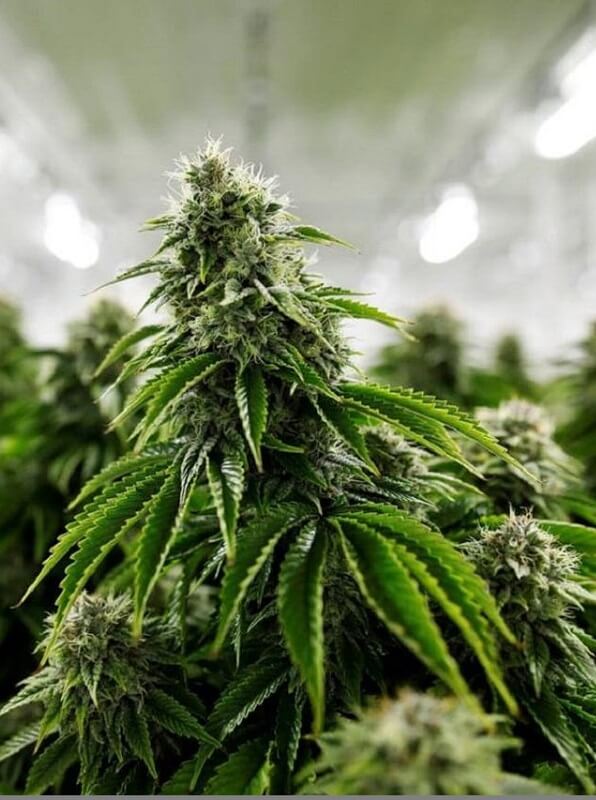Growing Cannabis at Home in the Czech Republic: A Comprehensive Guide
Cannabis cultivation has grown in popularity worldwide, and the Czech Republic, with its evolving legal landscape and favorable climate, has become a hub for home growers. Whether you are a complete beginner or looking to improve your existing setup, this detailed guide will cover everything you need to know about growing cannabis at home in the Czech Republic. We'll explore the legal framework, choosing seeds and strains suited to the Czech climate, indoor vs outdoor cultivation, equipment setup, lighting, ventilation, nutrients, growth stages, training techniques, pest management, harvesting, drying and curing, troubleshooting common problems, and a cost analysis to help you budget your grow.
1. Legal Framework in the Czech Republic
Before starting any cannabis cultivation, understanding the legal context is crucial.
Current Legal Status
- Personal possession: As of 2024, possession of up to 15 grams of cannabis or cultivation of up to 5 plants for personal use is decriminalized but not fully legal. Possession or growing beyond these limits may lead to criminal charges.
- Medical cannabis: Legal and available on prescription.
- Recreational cannabis: Not fully legalized but tolerated within the decriminalized limits.
- Commercial cultivation: Requires licenses and is tightly regulated.
What This Means for Home Growers
- You may legally grow up to 5 plants for personal use without facing criminal prosecution.
- Plants must be for personal consumption, not for sale.
- Ensure your plants are in a private place, not visible to the public.
- Selling or distributing cannabis remains illegal without proper licensing.
- Always stay updated with local laws, as regulations can change.
2. Choosing Seeds and Strains
Selecting the right seeds is the foundation of a successful grow.
Types of Cannabis Seeds
- Regular Seeds: Produce both male and female plants; good for breeding.
- Feminized Seeds: Almost exclusively produce female plants, which yield the buds.
- Autoflowering Seeds: Flower automatically after a certain period, regardless of light cycle; faster turnaround but generally smaller yields.
- Photoperiod Seeds: Flowering depends on light cycle; typically larger plants with higher yields.
Considerations for the Czech Climate
- The Czech Republic has a temperate continental climate with warm summers (average highs around 25-30°C) and cold winters.
- Outdoor grows should be timed for spring/summer to avoid frost.
- Choose strains that:
- Are resistant to mold and mildew due to occasional humidity.
- Have a short to medium flowering time (7-9 weeks).
- Can handle temperature fluctuations.
Recommended Strains for Czech Climate
| Strain Name | Type | Flowering Time | Traits | Notes | |------------------|----------------|----------------|-----------------------------------|-------------------------------| | Early Skunk | Photoperiod | 7-8 weeks | Mold resistant, high yield | Good for outdoor and indoor | | Northern Lights | Indica-dominant | 7 weeks | Resilient, fast flowering | Ideal for shorter summers | | Haze Variants | Sativa-dominant| 9-10 weeks | Uplifting, moderate yield | Best for indoor | | White Widow | Hybrid | 8 weeks | Mold resistant, balanced effects | Popular in Czech grows | | Autoflowering strains like Fast Bud or Lowryder | Autoflower | 8-10 weeks | Quick, discreet | Suitable for beginners, small spaces |
Where to Buy Seeds
- Purchase from reputable seed banks with discreet shipping to the Czech Republic.
- Avoid illegal or uncertified sources to ensure seed quality.
3. Indoor vs Outdoor Cultivation
Indoor Growing
Advantages:
- Year-round growing possible.
- Complete control over environment (light, temperature, humidity).
- Better security and privacy.
- Potentially higher quality buds.
Disadvantages:
- Higher initial investment in equipment.
- Requires electricity and more maintenance.
- Smaller grow space limits plant size and number.
Outdoor Growing
Advantages:
- Lower cost (sunlight and natural environment).
- Larger plants and higher yields.
- Easier setup and maintenance.
Disadvantages:
- Dependent on seasonal weather.
- Risk of theft or detection.
- Pests and environmental variables harder to control.
- Mold and mildew risk in humid periods.
Hybrid Approach
Some growers start seedlings indoors and then move plants outdoors in late spring for summer growth and harvest.
4. Equipment Setup
Indoor Grow Room Setup Essentials
- Grow tent or dedicated room: Reflective walls (Mylar) to maximize light.
- Grow lights: LED, HPS, or CFL (details below).
- Ventilation system: Inline fans, ducting, carbon filters.
- Temperature and humidity monitor: Hygrometer/thermometer combo.
- Grow medium: Soil, coco coir, or hydroponics.
- Containers: Pots, preferably fabric pots for air pruning roots.
- Timers: For automated light cycles.
- Nutrients: Cannabis-specific fertilizers.
- pH meter: To monitor water and nutrient solution acidity.
Outdoor Setup Essentials
- Quality soil or raised beds: Well-draining, nutrient-rich.
- Fencing or protective enclosure: To prevent theft and pests.
- Water source: Hose or drip irrigation.
- Shade netting: To protect from excessive sun or wind damage.
- Trellis or stakes: To support plants as they grow.
5. Lighting
Types of Grow Lights
| Light Type | Pros | Cons | Best For | |-------------------|----------------------------------|-------------------------------|-------------------------| | LED (Light Emitting Diode) | Energy efficient, low heat, long lifespan | Higher upfront cost | All growth stages, especially flowering | | HPS (High Pressure Sodium) | High intensity, proven flowering performance | High heat, electricity use | Flowering stage | | CFL (Compact Fluorescent Lamp) | Affordable, low heat | Low intensity, limited penetration | Seedlings, clones | | MH (Metal Halide) | Good for vegetative growth | High heat, electricity use | Vegetative stage |
Light Cycles
- Vegetative stage: 18-24 hours of light per day.
- Flowering stage: 12 hours light / 12 hours dark to induce flowering in photoperiod plants.
- Autoflowering plants: Light schedule less critical, but 18-20 hours is common.
Positioning and Distance
- Keep lights at appropriate distance to avoid light burn (typically 30-60 cm for LEDs, 45-90 cm for HPS).
- Adjust distance as plants grow.
6. Ventilation and Climate Control
Importance
- Controls temperature, humidity, and provides fresh CO2.
- Prevents mold and pest buildup.
- Removes heat generated by lights.
Components
- Exhaust fan: Removes hot, stale air.
- Intake fan or passive intake: Brings in fresh air.
- Carbon filter: Removes odors.
- Oscillating fan: Circulates air within the grow space.
Ideal Climate Parameters
| Stage | Temperature (°C) | Humidity (%) | |----------------|------------------|--------------| | Seedling | 20-25 | 65-70 | | Vegetative | 22-28 | 40-70 | | Flowering | 20-26 | 40-50 | | Harvesting | 18-22 | 40-50 |
7. Nutrients and Feeding
Macronutrients
- Nitrogen (N): Vital in vegetative stage for leaf growth.
- Phosphorus (P): Important during flowering for bud development.
- Potassium (K): Overall plant health and resistance.
Micronutrients
- Calcium, Magnesium, Sulfur, Iron, Zinc, Copper, Manganese, Boron.
Feeding Schedule
| Stage | Nutrient Focus | pH Range (soil) | pH Range (hydro) | |------------|------------------------------|-----------------|------------------| | Seedling | Minimal nutrients, mild feed | 6.0-6.5 | 5.5-6.0 | | Vegetative | High Nitrogen | 6.0-6.8 | 5.5-6.0 | | Flowering | High Phosphorus and Potassium | 6.0-6.8 | 5.5-6.0 |
Tips
- Start feeding lightly; overfeeding causes nutrient burn.
- Flush plants with clean water before flowering to avoid nutrient buildup.
- Use organic nutrients if possible for better flavor and soil health.
8. Growth Stages
Germination (3-10 days)
- Seeds sprout and develop taproots.
- Use damp paper towels or starter cubes.
- Keep warm (~22-25°C).
Seedling Stage (2-3 weeks)
- Seedlings develop first true leaves.
- Require gentle light and high humidity.
- Avoid overwatering.
Vegetative Stage (3-8 weeks or longer)
- Rapid growth of stems and leaves.
- Increase light intensity and nutrients.
- Train plants to maximize light exposure.
Flowering Stage (7-10 weeks)
- Buds form, pistils emerge.
- Reduce nitrogen, increase phosphorus and potassium.
- Monitor humidity carefully to prevent mold.
Harvesting
- When trichomes (resin glands) turn milky or amber.
- Harvest time depends on strain and desired effect.
9. Training Techniques
Training improves yield and light penetration.
Common Methods
- Topping: Cutting off the main stem tip to encourage bushier growth.
- Fimming: Similar to topping but less precise, encouraging multiple new branches.
- LST (Low Stress Training): Bending and tying down branches to spread canopy.
- SCROG (Screen of Green): Using a screen to create an even canopy.
- Supercropping: Gently crushing stems to promote stronger branches.
10. Pest Management
Common Pests
- Spider mites
- Aphids
- Thrips
- Fungus gnats
- Powdery mildew (fungus)
Prevention
- Clean grow area regularly.
- Inspect plants daily.
- Use beneficial insects like ladybugs for outdoor grows.
- Avoid overwatering to prevent fungus.
Organic Treatments
- Neem oil spray.
- Insecticidal soap.
- Garlic or chili pepper sprays.
- Diatomaceous earth.
11. Harvesting
Signs of Readiness
- Pistils turn from white to reddish/brown.
- Trichomes shift from clear to milky or amber.
- Leaves may yellow as plant redirects energy.
Tools Needed
- Sharp scissors or pruning shears.
- Gloves to protect resin.
Technique
- Cut branches individually.
- Handle buds gently to preserve trichomes.
12. Drying and Curing
Drying
- Hang branches upside down in a dark, well-ventilated room.
- Maintain 18-21°C and 45-55% humidity.
- Drying takes 7-14 days.
Curing
- Place dried buds in airtight glass jars.
- Open jars daily for 10-15 minutes to release moisture ("burping").
- Continue curing for 2-6 weeks or longer for best flavor and potency.
13. Troubleshooting Common Problems
| Problem | Cause | Solution | |-------------------------|------------------------------------|------------------------------------| | Yellowing leaves | Nutrient deficiency or overwatering | Adjust feeding, check watering | | Wilting | Underwatering or root rot | Check soil moisture, improve drainage | | Powdery mildew | High humidity | Reduce humidity, apply fungicide | | Leaf curling or burn | Light burn or nutrient toxicity | Move lights farther, reduce nutrients | | Slow growth | Poor genetics, wrong pH, low temp | Adjust environment, check seeds |
14. Strain Recommendations for Czech Climate
For outdoor grows in the Czech Republic, prioritize:
- Early flowering time (to avoid autumn rains).
- Mold resistance.
- Medium plant height (to avoid wind damage).
Recommended:
- Early Skunk
- Northern Lights
- White Widow
- Autoflowering strains for discreet grows: Lowryder, Fast Bud
15. Cost Analysis
| Item | Approximate Cost (CZK) | Notes | |---------------------------|-----------------------|-------------------------------| | Seeds (5 feminized) | 1500 - 3000 | Depends on strain and bank | | Grow tent (120x120x200 cm)| 3000 - 6000 | Mid-sized tent | | LED Grow light (300-600W) | 4000 - 9000 | Energy efficient | | Ventilation system | 2000 - 4000 | Inline fan + carbon filter | | Pots and soil | 1000 - 2000 | Fabric pots + quality soil | | Nutrients | 1000 - 2000 | Complete feeding kit | | Miscellaneous | 1000 | pH meter, scissors, fans | | Total Initial Setup | 12,500 - 26,000 | Approximate initial investment|
Ongoing Costs
- Electricity (LED lights approx. 150-300 CZK/month depending on usage).
- Nutrients replenishment.
- Replacement parts as needed.
Conclusion
Growing cannabis at home in the Czech Republic is feasible and rewarding if you respect the legal limits and invest in proper equipment and knowledge. Whether you choose indoor or outdoor cultivation, selecting the right strain, maintaining optimal environmental conditions, and following best practices in plant care will ensure a successful harvest. With patience and attention to detail, you can enjoy high-quality homegrown cannabis suited to your personal preferences.
- Disclaimer: This guide is for informational purposes only. Always comply with local laws and regulations regarding cannabis cultivation.

